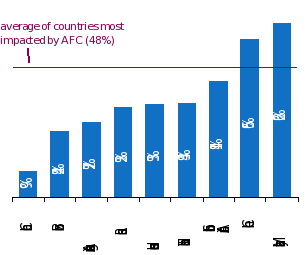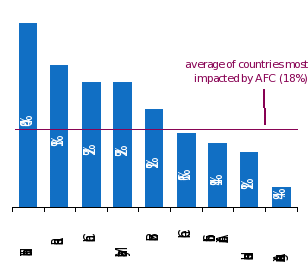Economic Commentary
Financial markets have had their worst start to the year for some time. The selloff was broad-based across most equity, fixed income and commodity markets. In the first full trading week, global equity markets fell 6.1%, the worst weekly performance since the Eurozone crisis in 2011. Oil prices collapsed to their lowest level since 2004. The global rout was triggered by a devaluation of the Chinese renminbi, which fell 1.6% against the US dollar during the week.One may question why a relatively small depreciation of China’s currency had such dramatic ramifications across global financial markets. The weakening of China’s currency appears to have raised concerns about the risk of further devaluations, capital flight and, potentially, a full-blown balance of payments crisis in China.
China is the largest contributor to global GDP growth and the largest consumer of most commodities. The risk of slower growth leads to negative sentiment towards countries that are dependent on Chinese demand as well as commodity producers. In addition, higher US interest rates are also working against these EMs by encouraging the reversal of capital flows from the US to EMs (see our commentary, EMs are the third wave of the global financial crisis). While a balance of payments crisis in China is unlikely, some emerging markets (EMs) are vulnerable due to their large current account deficits, high external debt and low levels of foreign exchange reserves.
The last large-scale balance of payments crisis was the 1997/8 Asian Financial Crisis (AFC), which has some alarming similarities to current events. In the early 1990s, as the US was recovering from a recession, the Fed, under Alan Greenspan, began raising interest rates. This led to a stronger US dollar and capital flight from Asia as past investment flows were reversed. A number of South East Asian currencies were pegged to the US dollar (the crisis originated in Thailand and mainly spread to Indonesia, Malaysia and South Korea). The stronger currencies eroded export competitiveness leading to current account deficits. With capital flight, these deficits became un-financeable, international reserves evaporated, US dollar pegs were broken and currencies collapsed. External debt became unsustainable as capital flows dried up, economies slowed and weaker exchange rates increased the cost of repaying foreign debt. The crisis ended in severe recessions, high inflation, an IMF bailout and widespread defaults on debt.
To avoid a repeat of the crisis, a number of countries tried to keep foreign debt low and maintain large buffers of foreign exchange reserves. So, where do EMs stand today compared to 1996, the year before the AFC?
External Debt (2014) (share of GDP)

EMs vary on their vulnerability to a potential crisis. Some EMs, such as China, Thailand and to some extent Malaysia,appear well positioned. These countries run current account surpluses, have low external debt (with the exception of Malaysia) and substantial foreign currency reserves. They appear to have learnt from Asia’s experience during its financial crisis.
Current International Reserves share of GDP

However, a number of other countries, such as Argentina, Chile, Indonesia and South Africa are vulnerable. These countries run current account deficits, which require financing from foreign investors. In many cases, these are Chinese companies investing in mining, agriculture and infrastructure. These investments may not continue with the slowdown in China and its lower consumption of commodities. In addition, the vulnerable countries have relatively low international reserves, which raises the risk of sharp currency depreciation. Their high external debt levels would become more burdensome to service as currencies depreciate.
In summary, the reaction of financial markets during the first week of the year to China’s devaluation appears overdone. The risk of an external crisis in China is low with its current account surplus, low external debt and significant international reserves. Some other EMs are also well positioned to avoid a crisis, such as Thailand and Malaysia. However, the risk of a balance of payments crisis in specific EMs remains a clear and present danger. This could be triggered by a further slowdown in China and devaluation of its currency, lower commodity prices or higher US interest rates.
